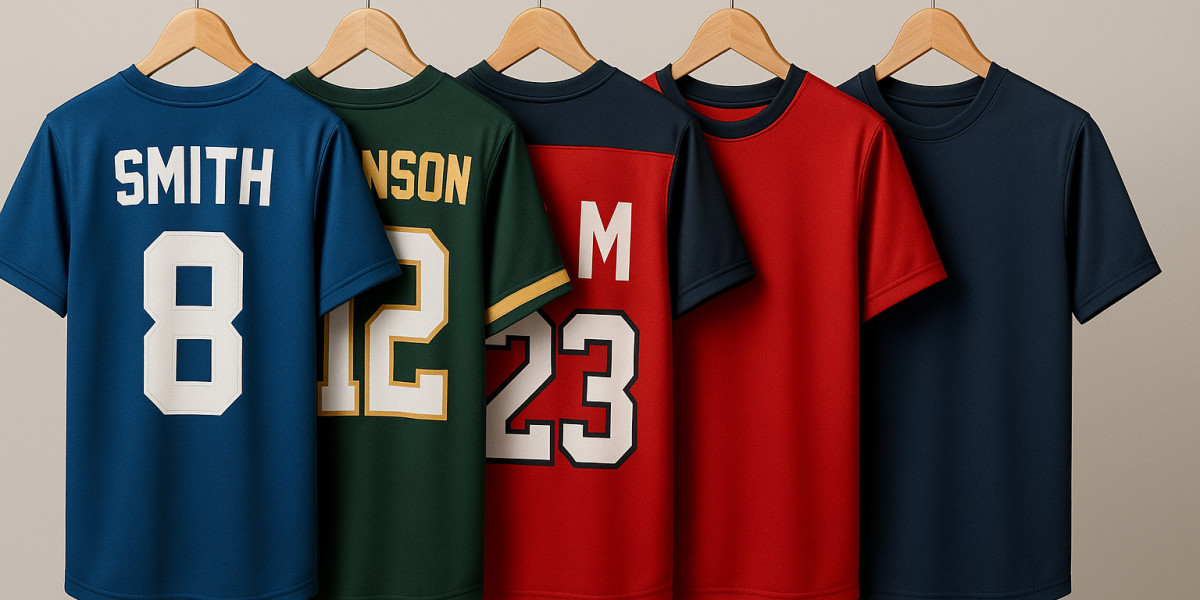I still remember the first time I walked into a small print shop in Tiruppur with my own t-shirt design scribbled on a notebook. The smell of fresh fabric, the gentle hum of sewing machines, and the stacks of colorful rolls piled up to the ceiling made me feel like I was in a creative playground. What I didn’t realize back then was how much happens before a custom t-shirt finds its way into our wardrobes.
So, let’s go behind the scenes and explore the journey — through real shop floors, chai-time chats, and lessons learned the hard way.
Step 1: Choosing the Right Fabric
Once, I bought a t-shirt at an expo just because the print looked cool. Big mistake. By midday, it felt like I was wearing a plastic bag. I told Rajesh, my go-to t-shirt guy in Tiruppur, and he laughed, “Poly-blend traps heat. Always touch the fabric before you choose.”
Cotton is the everyday winner — it’s soft, breathable, and perfect for our hot days. Polyester is tougher, better for sports, but not great if you’re just relaxing. Blends can give you the best of both. If you care about the planet, organic cotton is worth asking for.
One trick I learned: look for the GSM value — around 180–200 GSM feels strong but still comfy. And if the tag says “enzyme wash,” you’re in for a softer tee that stays nice even after 50 washes.
You’d be surprised how much you can tell just by rubbing the fabric between your fingers. Smooth and natural? Good. Slippery and plasticky? Put it back.
Step 2: Designing the Blueprint
Designing is where the fun begins. I’ve seen artists hunched over iPads, zooming in to adjust tiny details most people wouldn’t even notice. My friend Anjali once designed a lime-green tee for her dance group. On screen, it was perfect. In reality, it took three trials to get the shade right because fabric dyes behave differently than pixels.
Today, personalization is king. It could be your favorite quote, a wedding date, or even an inside joke only your friends understand — a good designer will make it work for you. My advice: always ask to see a printed swatch before bulk printing. What looks bold on-screen can look dull on fabric if you skip this step.
Step 3: Printing Techniques and Creative Magic
When it comes to printing, I’ve learned a few lessons the hard way. For my college fest, we chose the cheapest heat transfer option. Let’s just say the print didn’t survive the first laundry day.
Here’s what works:
Screen Printing: Best for big, bold designs and orders in bulk. Reliable and long-lasting.
Direct-to-Garment (DTG): Perfect for detailed images and single pieces. Think of it like a printer that works directly on fabric.
Sublimation & Heat Transfer: Great for polyester and photo-like designs, but they need high-quality materials to last.
Rajesh once let me feel the difference between a plastisol print and a water-based one. Plastisol was bright and slightly raised, while water-based felt like part of the fabric. Which is better? Depends on whether you value softness or durability more.
Step 4: The Manufacturing Process
If you’ve never stepped into a t-shirt workshop, you’re missing out on real-life precision in action. Picture this: a tailor balancing scissors on his finger while cutting perfect shapes from fabric sheets, someone else threading a machine while shouting cricket scores across the room, and the smell of fresh cotton in the air.
The process is simple in theory — join the shoulders, attach the neck rib, sew the sleeves, hem the edges. But in reality, it’s an art.
Quality control is serious business here. At Rajesh’s place, every few shirts get a test wash. If the print cracks or the size changes, they fix the problem before sending out the order.
Step 5: Branding and Packaging
This is where small details give the final product its personality. A neck tag that says “Made in Tiruppur,” a hand-written thank-you note, or a cloth pouch instead of plastic — all these make your custom t-shirt feel special.
One seller I know uses packages that smell faintly of lemongrass. When the customer opens it, they get both a shirt and an experience.
Step 6: From Factory to Fashion
Some custom t-shirts travel halfway around the world. Others go straight from the shop table to your backpack. I’ve ordered tees from local Instagram stores that arrived in two days with my name written on the box.
Pop-up markets, small stalls at college fests, and online flash sales — all of these are where the magic connects with people. If you’re selling, real photos of people wearing your shirts work better than any fancy ad.
The Hidden Heroes
It’s easy to forget the people who make these shirts possible — the tailors who stitch your neckline just right, the art team who adjusts colors until they pop, and the person folding each shirt with care.
Last year, Rajesh closed shop for a whole day so his ironer could attend his daughter’s wedding. That’s the kind of family atmosphere that’s stitched, invisible, into some of the best t-shirts I own.
Conclusion
Now you know, a custom t-shirt isn’t just a piece of clothing. It’s the sum of choices — fabric, design, print, craftsmanship, and heart. Whether you’re wearing it to a festival, gifting it to a friend, or selling it in your store, it carries a little story with it.
Take care of your t-shirts, and they’ll be with you for years.
Pro tip: Always wash inside-out in cold water, skip harsh detergents, and let it air dry. It’s old-school advice but works every time.
FAQs
Q: What’s the best fabric for a custom t-shirt?
A: Cotton for comfort, polyester for active use, blends for balance, and organic cotton for sustainability.
Q: How do I keep the print looking new?
A: Wash inside-out, use mild soap, and avoid heat drying.
Q: Which printing method should I choose?
A: Screen printing for bulk and bold colors, DTG for detailed and small orders.







